by Blake Thaxton | Aug 19, 2013
It is that time of year where mysterious webs have invaded pecan trees throughout the Southeast United States. This is definitely the case in the panhandle of Florida. Many have called into the extension office asking for identification of the web mass in their pecan trees. It is the Fall Webworm that has made a home in the pecan tree this fall.
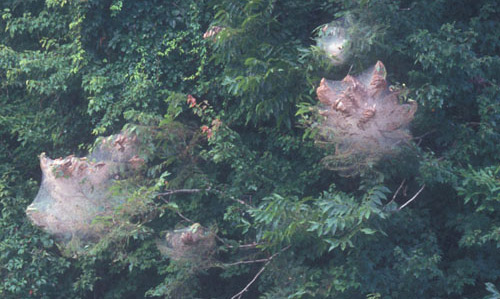
Photograph by James Castner, University of Florida.
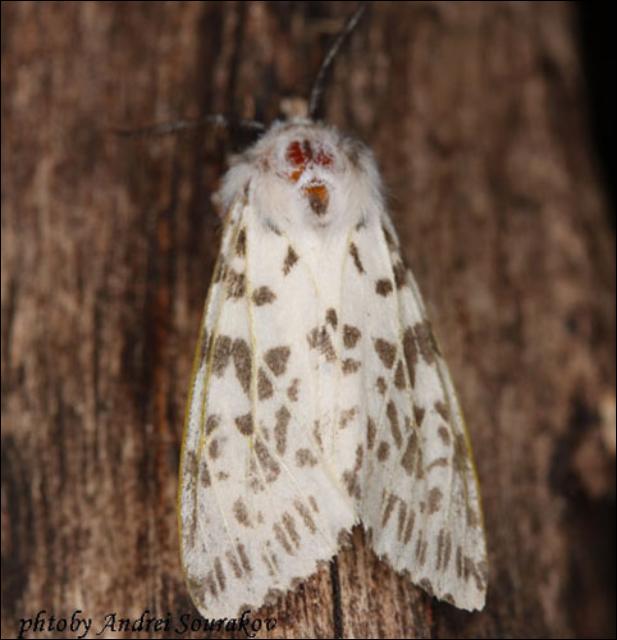
Photograph by Andrei Sourakov, University of Florida.
Fall Webworm
The adult fall webworm is a moth that is bright white in color and may have darker spots on its wings. The larvae of the moth are what lives in the tent web masses. Immediately when the larvae webworm hatches out of the eggs it begins to create its webs around foliage in which it will feed on.
Damage
The damage cause by the feeding of the larvae on the pecan trees is isolated to the leaves and they will not eat the nuts. If Defoliation is severe enough it can reduce the current years crop and the following years crop. Several years of defoliation can lead to death of the tree but this is not likely. Obviously the webs are ugly as well and if the tree is not only a producer of pecans but also functioning as an attractive shade tree in a ornamental since this can be a problem.
Control
In most commercial pecan production settings webworms are not very prevalent because of the spray programs implemented. For residential settings the best solution is to manually prune them out because of the lack of proper spray equipment to cover the entire tree. If the problem is bad enough call your local extension agent to get recommendations on products that could be used.
Sources:
Andrei Sourakov and Thomson Paris (2011, April) Fall webworm,Hyphantria cunea (Drury) (Insecta: Lepidoptera: Arctiidae: Arctiinae). Retrieved from http://edis.ifas.ufl.edu/pdffiles/IN/IN87800.pdf
Michael J. Hall. Fall Webworm. Retrieved from http://www.lsuagcenter.com/NR/rdonlyres/68665E57-A2F4-4030-A4E6-55821DCFBDD6/16783/FallWebworm_sheet_.pdf
by Blake Thaxton | Aug 19, 2013
Question of the Week. What is the problem with the roots on this dead Okra(Abelmoschus esculentus) plant? Please post your comments below. The answer will be revealed next week !
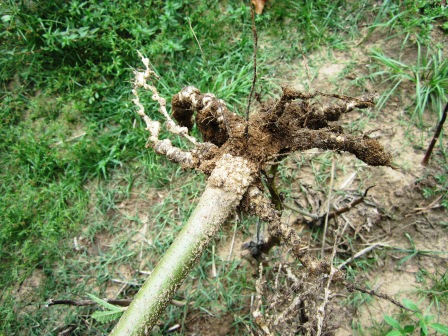
Answer: Root Knot Nematodes !
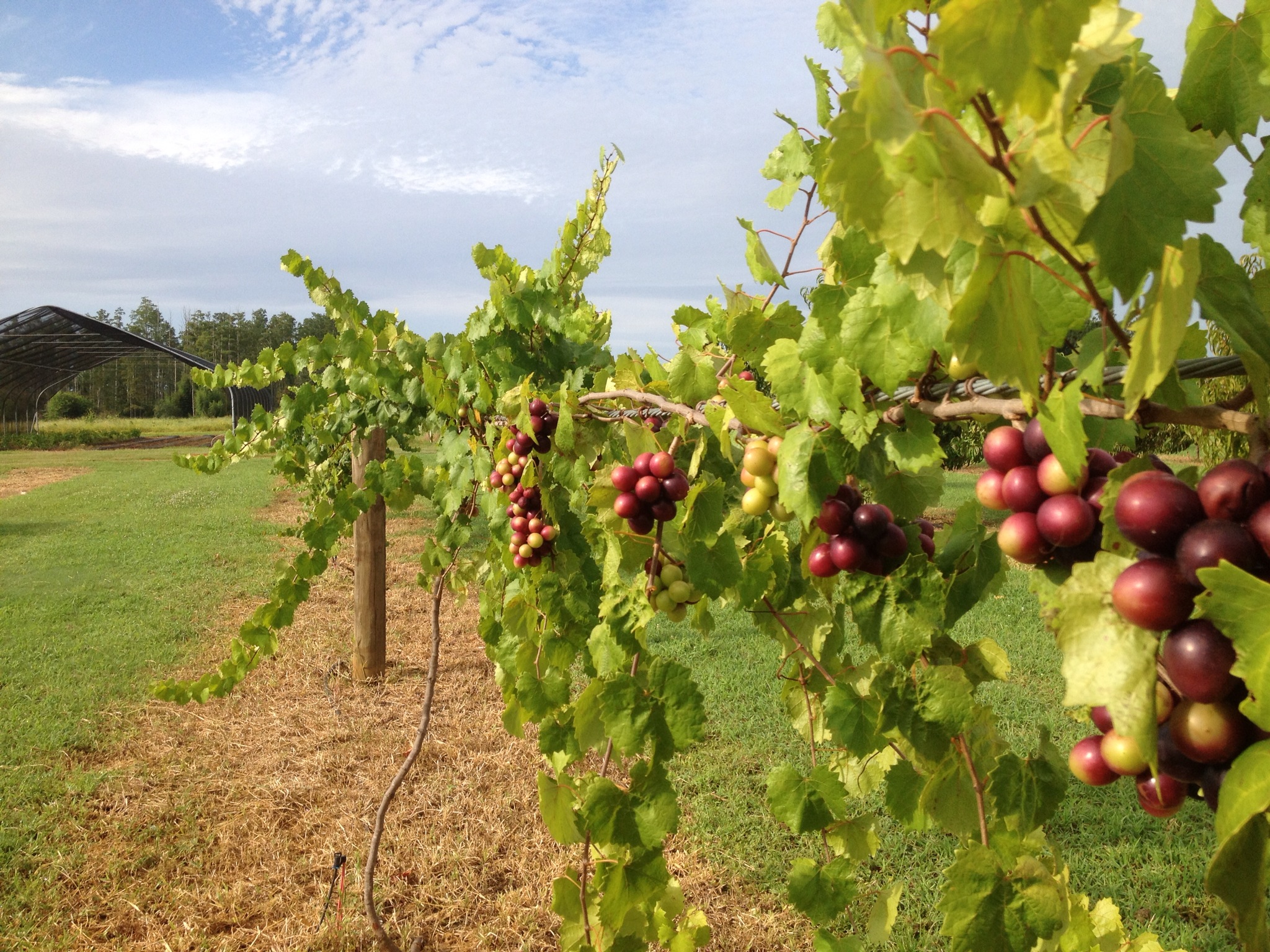
by Blake Thaxton | Jul 22, 2013
Fruit trees are a wonderful addition to the landscape at home or even a great niche for the small farmer.

Most people love the thought of picking fresh fruit off of the tree or vine and knowing exactly where it comes from. There are a lot of considerations that must be taken into account for a homeowner looking to spice up the landscape or the small farmer looking to diversify their operation.
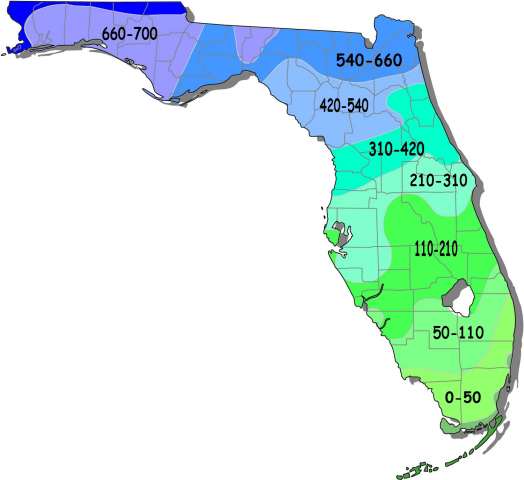 Chill Requirements:
Chill Requirements:
Deciduous trees have a chilling requirement in order to flower and produce fruit. Species and cultivars will have their own number of chill hours that must be met. Chill units are the estimated accumulative number of hours at 45°F or under during the dormant season. The Panhandle of Florida receives the most chill units in the state, therefore allowing more of a selection of fruit trees.
Disease Pressures:
Pecan, Peach/Nectarine, Plum, Bunch Grape, Apple, and Pear all have high disease pressures in the climate of the Florida Panhandle. Peach and Nectarine, for example, have a high number of necessary fungicide sprays required for high quality fruit. Mushroom root rot, peach scab, bacterial leaf spot, and brown rot are a few diseases of Peach and Nectarine. The other fruits mentioned have a similar list of disease problems that demand frequent and timely applications of fungicides.
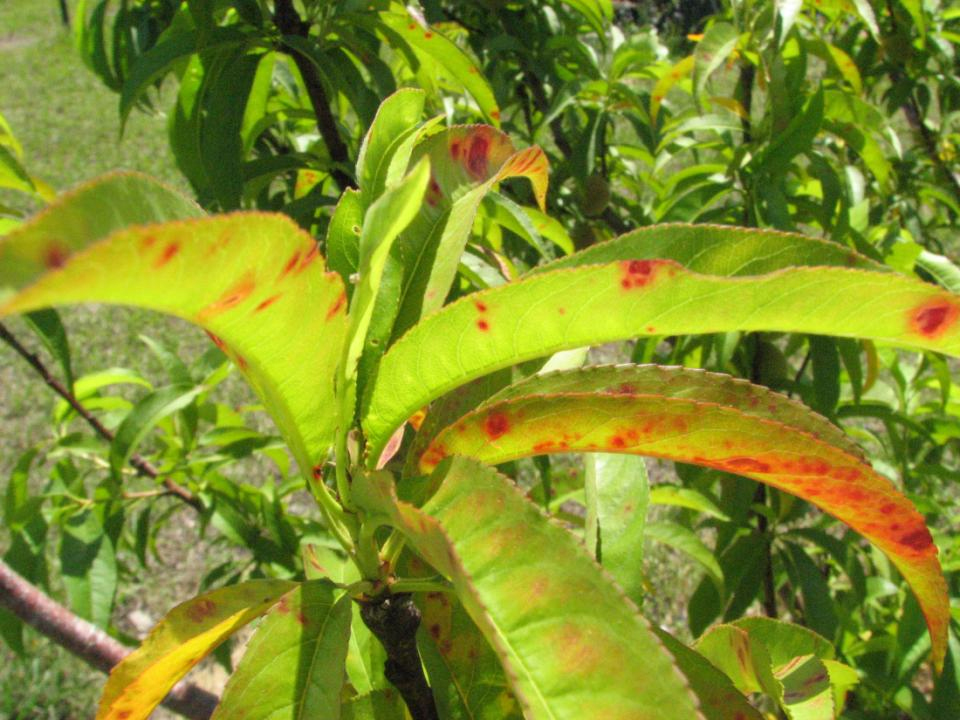
Peach tree affected by Bacterial Leaf Spot symptoms. Photo by G. England.
Along with disease pressures and chilling requirements, there are other factors that have to be taken into account before installing fruit trees in Northwest Florida. The sustainability of fruit trees in North Florida can be read about further in this UF/IFAS publication. In the publication, proper varieties and cultivars are listed for the fruit crops discussed. To learn more about fruit culture in Florida, please take a look at the following linked publications.
If questions arise about whether a certain fruit crop can be grown in the Florida Panhandle, contact your local extension agent.
by Blake Thaxton | Jun 17, 2013
 Aquaponics is an exciting system where fish and plants grow in harmony. The aquaponic system can be a fun project for the home gardener but can also become a successful farming venture. Come and learn the basics of growing fish and plants together in an AQUAPONICS system.
Aquaponics is an exciting system where fish and plants grow in harmony. The aquaponic system can be a fun project for the home gardener but can also become a successful farming venture. Come and learn the basics of growing fish and plants together in an AQUAPONICS system.
Date: June 25th Time: 8:00am-3:30pm Cost: $25
Locations: UF/IFAS Extension Escambia Co., 3740 Stefani Road,Cantonment, FL 32533


Register for the workshop at: ap2013.eventbrite.com
For more information call or email:
Chris Verlinde – (850) 623-3868 or cmverlinde@gmail.com
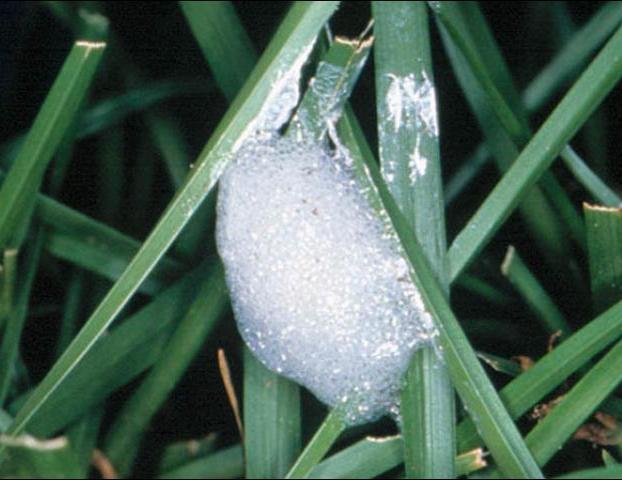
by Blake Thaxton | Jun 12, 2013

Credit: Lyle Buss, University of Florida
In recent weeks Spittlebugs have been found everywhere in the western parts of the panhandle. Spittlebugs are the little black and orange insects you find everywhere in early June. The adult spittlebug is about 1/4 inch long and has two orange lines across its back. You may notice them flying on you while you mow the lawn.
The immature spittlebugs called nymphs, are usually found in a foamy white mass that characterizes the name of the insect. The spittle mass is for protection of the nymphs from predators and desiccation.

Credit: E. A. Buss, University of Florida
The spittlebug can cause injury to ornamental turfs and other ornamental plants. The adults feed on turf, centipede is the turf of choice. When feeding, the insect injects a toxin into the leaf blade with its piercing/sucking mouthparts. The pierced leaf blade will take on purple, white, or yellow stripes along the turfgrass blade vertically. Heavy infestations are best identified by a combinations of finding the injury, spittle masses, and large numbers of adults present.

Credit: Larry Williams, UF/IFAS
Recently spittlebugs have been spotted across many counties in the panhandle. Many have brought them to the extension offices for identification and treatment recommendations. Identification is the correct first step when having an IPM or Integrated Pest Management approach to insect control.
Bryan Unruh Ph.D is the UF/IFAS turf specialist stationed in Jay at the West Florida Research and Education Center. Dr. Unruh posted on Facebook about Spittlebugs and the post read:
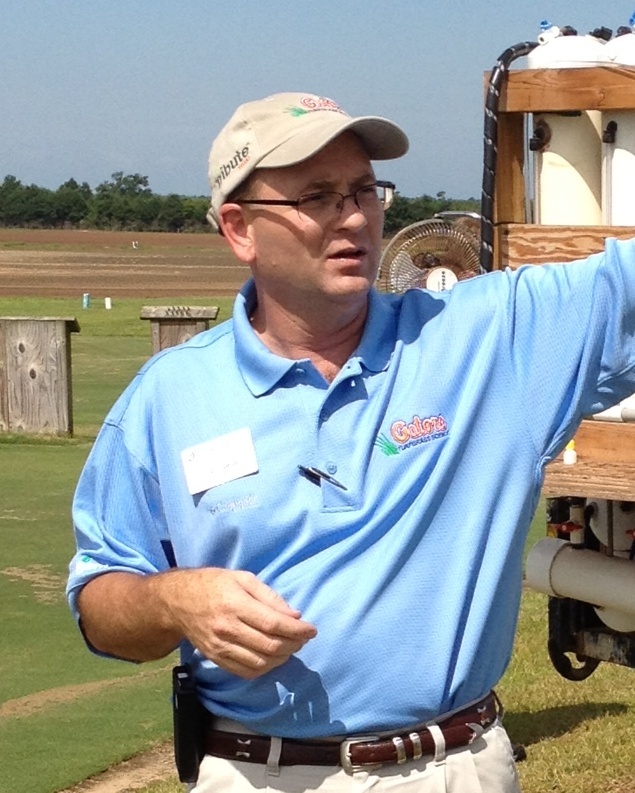
Dr. Bryan Unruh, UF/IFAS
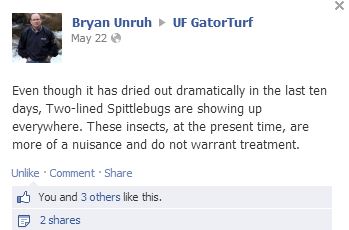
Sticking to an IPM plan, at this current date spittlebug damage has not met the aesthetic threshold to put a control plan in place. Once the threshold has been met then cultural, mechanical, an chemical techniques need to be discussed to best take care of the issue. Since Dr. Unruh commented on spittlebugs there has been a dramatic increase in rainfall, so we can expect for the spittlebugs, to stay around a while longer. If you think you have an infestation that warrants treatment, call your local extension agent for treatment options.












